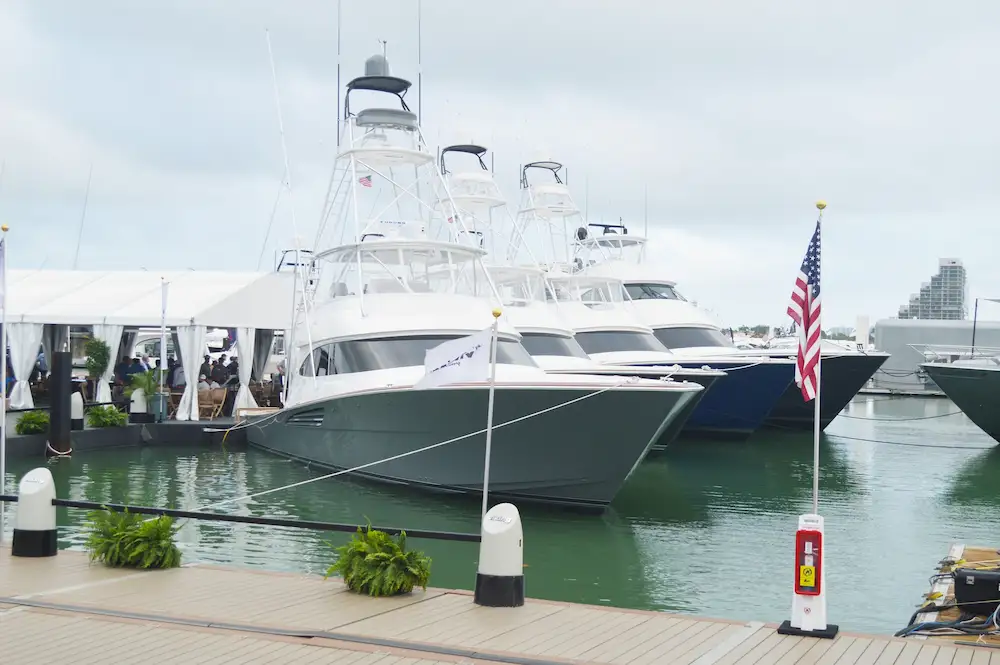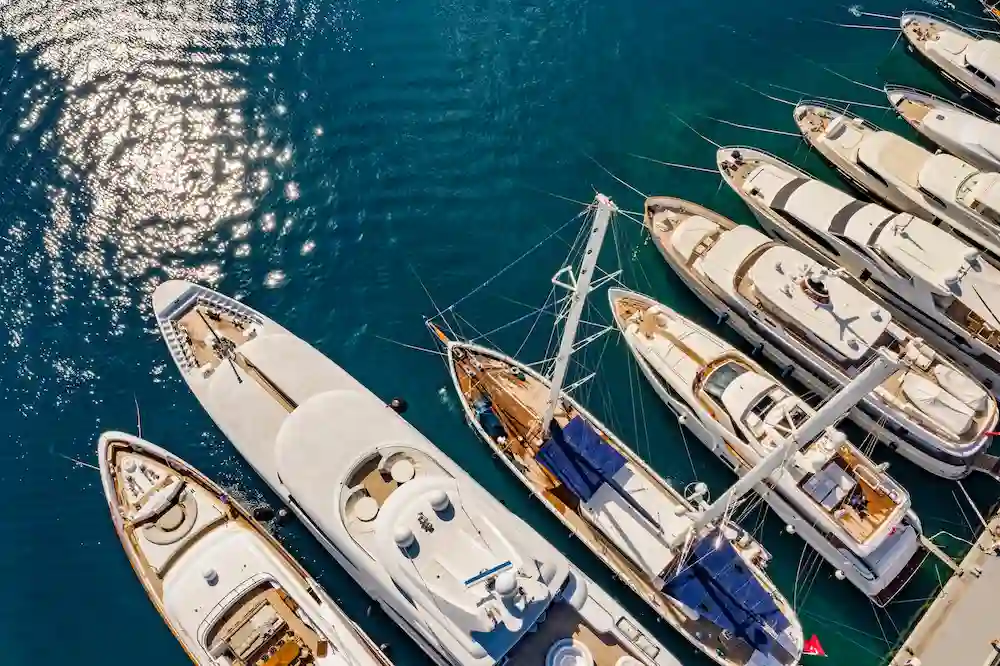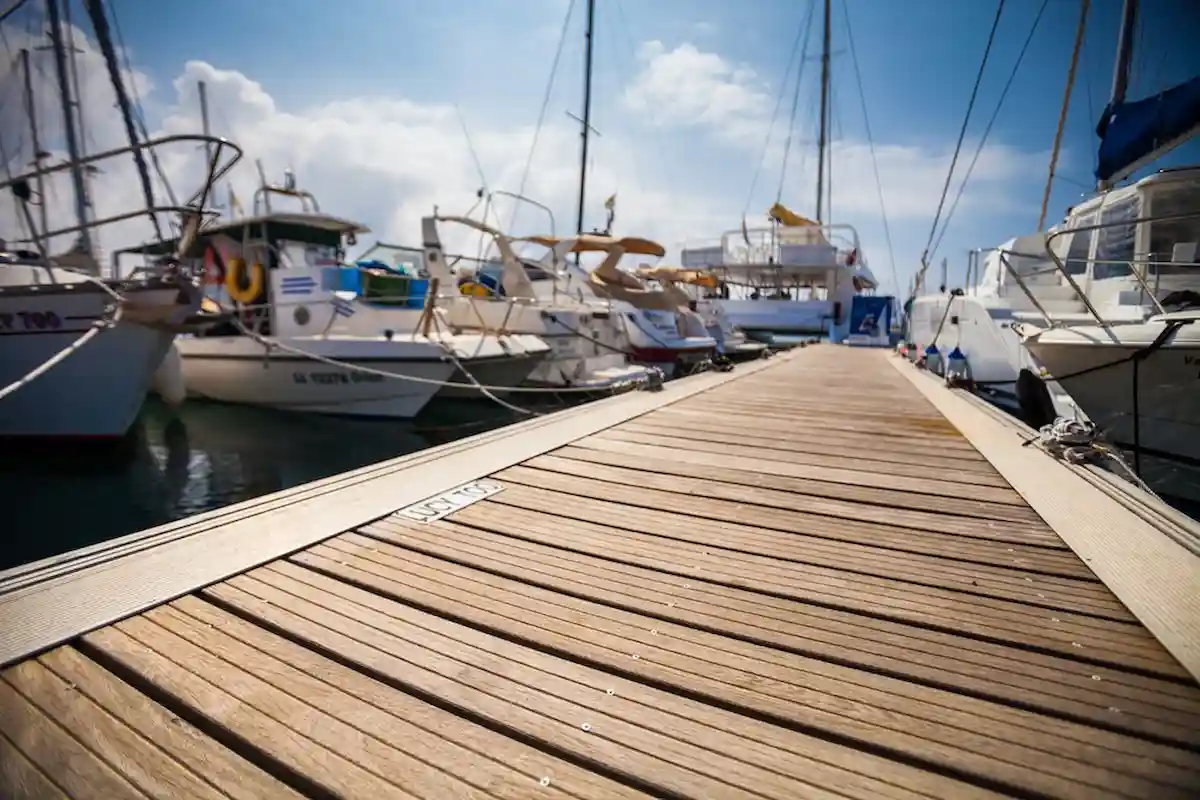Can you live on a boat in San Diego? What are the best liveaboard Marinas in San Diego?
In this article, we will answer all your burning questions, including how to find a boat to liveaboard. Let’s dive in!
Best Liveaboard Marinas in San Diego
- Safe Harbor Marina
- Sun Harbor Marina Point Loma
- Shelter Island Marina
- Intrepid Landing
- SeaWorld Marina
- Marina Village
- Marina Cortez
- Point Loma Marina
- Harbor Island West Marina
Living on a Boat in San Diego

There are many marinas in the San Diego area that allow a certain percentage of boats to liveaboard. For health reasons, the Port of San Diego and private marinas limit the number of people living on a boat in San Diego.
The term “liveaboard” is defined by the marina. Generally, anything more than three nights per week is considered full-time. Often, a two-week vacation is also granted once a year, on the condition of not living aboard.
If you live on a boat in a marina, you can even save on housing costs while meeting fellow boaters and sailors and having a great time.
Most marinas have a limited number of restrooms and showers. Some marinas have limited parking facilities. Not to mention marina employees remove trash from the docks.
Some marinas are more “liberal” about the exact number of people traveling with you. Others try to limit the number of full-time residents. A rough estimate is 10 to 20% per marina. One hundred berths and 10 to 20 residential cabins.
Marina management is subject to change. There are always rumors that “this or that” marina allows a high percentage of residents. A new person arrives and cleans up.
The boat with a barking dog tied to the deck by a rope. The guy who pays his mooring fee is two weeks late. Suddenly they fall victim to the 20% rule and leave.
It can also be a temporary resident. People who settle in to liveaboard for about six months a year. Other boats go out to sea to Mexico. They can arrange with the marina to stay on board temporarily. After a few months, they head south to explore the area.
Rules And Costs of Liveaboard Marinas
Rules vary from marina to marina. For cruisers, the following general rules apply:
- The boat has to be usually 35 feet or more in length. Don’t be afraid to call the marina if this is the case. There are some beautiful 27-foot sailboats that can cross an ocean. 35 feet is usually the starting point of the marina.
- An additional fee of usually $200 on top of the slip fee. Often $100 for the second person. For example, the fee for a 35-foot sailboat might be $650. That would be $650 plus $200 plus $30 for electricity. $880 for one person or $980 for two people.
- Often one car in the marina parking lot. Sometimes two if paying for two people. Parking can be a problem.
- Dogs can be a problem. As with apartments, some breeds are banned these days. If you are going to leave your dog on board a boat all day, it is better to have a quiet dog. It is also a good idea to get your dog used to a flotation device. And if you have a barking dog, then you better start making friends with your marina neighbors ASAP and give them a nice boating gift or a bottle of wine to avoid any complaints.
- Cats using the neighbor’s boat as a litter box are also problematic.
- All boats must provide insurance to the marina, which lists the marina as secondary. In the event of damage to a neighbor or the marina.
- Most marinas have a meter or flat rate for utilities. This is especially true for residents.
- Most marinas expect the boat to be usable. They are not looking for a floating boat park. Keep rusty bikes and flower pots off the deck. Even if you rarely take the boat out, keep it in good repair.
- Don’t even think about subletting your boat or using it for Airbnb. If you are serious about living aboard, you will be caught and asked to leave.
- Be prepared to respond to any credit issues. As with any rental, a credit check will be performed.
This is a basic guide, but most marinas have similar rules. If the marina allows a 20-pound dog and your dog weighs 30 pounds, they may give you a permit. If your 5-pound poodle doesn’t stop crying, it may be a bigger problem.
Today, most marina gates have electronic keys. A simple computer program tells you that you arrive at 6 pm and leave at 8. The parking garage is equipped with cameras that check license plates every night.
The security guard makes a list of the people who are on your ship. Trying to get around the rules is almost impossible these days.
Anchoring in San Diego Bay For Free
It used to be that way. You could anchor for free near National City and Coronado. It was the Wild West there. There was a lot of crime, too. I heard a rumor that a boat sank because someone climbed aboard and stole a $20 bilge pump.
This old wooden boat was taking on water every day. I was confident that the bilge pumps would be fine. It wasn’t a good plan, but he didn’t expect anyone to steal an old pump. They did, and the ship sank. So this person managed to steal a $20 pump.
Every time there was a storm, boats would wash up on shore. Or worse, they would sink on the spot. Some of these people had no idea how to anchor a boat properly. When the sun was shining, it might have been just fine.
They immediately started crawling around the bay when the rain and wind picked up. Or worse, on a boat that didn’t know how to anchor properly.
The city of San Diego ended all that in the early 1990s. A number of pirates anchor in the shallow waters near the entrance to San Diego Bay. Some of the ships have been abandoned.
Occasionally, they surface near North Island Naval Air Station’s Runway 36. It’s a sad sight; the solution is usually to break them up and take them to the landfill.
Mooring Buoys in San Diego Bay
A mooring ball or buoy is attached to the bottom of San Diego Bay. It is usually a large cement block. You tie your boat to the lines, and it is a very safe mooring. Sometimes, the deck fittings break, or a line fails, but that is much better than relying on an anchor.
It takes a powerful storm that lasts for days for a boat to appear on the news that has lost its mooring. Unlike the Wild West of the free anchorage era, a vessel that loses its mooring will find a dozen sailors securing it one way or another.
The main area near San Diego Airport and the Star of India is a well-known mooring area. There is some aircraft noise in this area and a nice view of downtown San Diego. Parking has been challenging since the city replaced 72-hour parking with a night parking ban.
There is also a dock near the base of the Coronado Bridge at the entrance to Coronado. Another excellent place to view downtown. Parking is also a problem. Coronado can be a little picky about where and when you can park.
One of the most popular moorings in San Diego is Shelter Island in the America’s Cup harbor. There is parking nearby in this sheltered area. The fishing fleet comes and goes at all hours, but it is a very popular way to get a mooring.
Mooring in San Diego and Living Aboard the Boat
Is it easy to get a mooring? The simple answer is that it can take years. Can you live aboard with an anchor ball? You can for a limited time.Let’s leave it at that.
There are no electronic keys or assigned parking spaces. That may change in the future, but if you don’t cause trouble, you’re on your own.
Again, if a poor dog is barking on the patio for days on end, he will (and should) be extra alert. It’s bad enough to leave a dog on a boat in a marina. Standing in the middle of the bay for weeks at a time is just cruel.
If your boat hasn’t been off the mooring in years, it’s often overlooked. If you think it’s a good idea to flush in the bay or have other silly ideas, you will stand out and get asked some questions.
Some boats come alongside and empty the holding tank. Emptying in the bay is a serious offense. For example, when you visit Catalina Harbor, they often put a marker on your holding tank. If they see the dye, you will face a hefty fine.
Others pay for a night at the transit wharf to empty holding tanks and fill water tanks. Perhaps to load heavy items like propane tanks.
The simple answer is that if you are discreet and clean, no one really cares how much you use (or spend) on your boat at the mooring. If you are entitled and like to call once a week to complain about things, you may be asked how often you are on board.
Mooring vs Liveaboard Marina in San Diego

If you are single and go to the boat every day, a marina is certainly convenient. You might expect to pay around $900 for legal liveaboard status. You will have a hot shower and swimming pool just a few feet from where you park.
You can transfer from your car to a dockside cart and load the boat with ease. You can take the hose off the dock and fill the water tanks or wash the boat. You also have a power cord for the microwave and TV.
Probably the nicest thing about a marina is that there is a small electric heater. Pay a little more for a heater with a timer or thermostat. Even on low, the boat will warm up quickly with these heaters.
Energy consumption is something to consider. Solar panels and power generators are highly recommended to save you money in the long run.
Many people who do mooring use propane heaters. You have to be careful about ventilation, but they are a popular choice.
The same goes for water used for basic cleaning and brushing teeth. A shower is usually done at a local gym. You could try to schedule a daily workout at the local gym on the way home and take a shower after.
Sometimes you don’t have access to a gym, then you could still keep fit by using portable fitness equipment on the boat.
Your extra workout will consist of rowing to the boat every day. You may be lucky enough to be near the boat dock. They may be far away.
Some people risk leaving an old outboard locked in the boat somehow. If not, close the oars and move. Hopefully, you didn’t walk a few miles to get from your hidden parking spot to the boat.
So you have to do the math. Both financially and in terms of the time you have. If you are living with roommates or at home, a recliner can be a good solution.
Pay $200 a month and have your own place for a few weeks a month. If you have more time than money, this could also be a good way to own a boat for little money.
If you work overtime every day and then take a class at night, this might not be a good idea. Row to your boat at 10 pm every night and back at 6 am. Then get your car a mile away and drive to the gym to shower, that can get boring fast.
Where you receive your mail also matters. Most marinas, including the one where I live today, have limited mail slots. Even if you are a legal resident, you will likely wait years to receive mail.
Of course, if you have a berth, you’ll need a mailbox for your mail. So if you don’t have family nearby, budget for the cost of mail delivery.
Contrary to popular belief, it is cold in San Diego. Not for long, but there are 2 or 3 months in the winter when it can be freezing on deck. Your ship may be nice and warm, but jumping on the boat for a 15-minute ride ashore is a young person’s game. Especially if you have to walk 20 minutes afterward to find your car.
In my opinion, mooring is a great, cost-effective solution if you have some flexibility. You go to the boat two or three nights a week. You get up at 10 and paddle back before it gets dark. If you’re busy, there may be an easier way to save $400 a month.
If you only go to the boat three nights a week, you don’t even have to pay the charter rate. If the marina allows three nights, you’re on the safe side. Be aware of the vacation hours that apply at most marinas.
You may find a marina that charges $400 or $450. Compare that to the $200 for the mooring. It will be the best $200 you will ever pay. Convenient when it comes to convenience.
Now $900 or $200 is a big difference. Most of the berth holders are normal people. There are some who have been at sea too long.
Don’t talk to these guys. Find a normal-looking person to row ashore. Be aware that you may be looking at a 30-minute walk to find his car or the gym shower. Still, most people will make the effort to answer some basic questions.
Can I LiveAboard a Boat in Mission Bay
Mission Bay in San Diego is a state park. The simple answer is that there are no full-time boats in Mission Bay.
However, I did live aboard as a harbormaster in Mission Bay for three years. An arrangement had been made with the marina to have a pair of eyes on the dock at night.
These types of arrangements are rare, but it’s a good idea to have someone keeping an eye on things. I’ve secured boats whose lines were broken and turned off broken water lines. Most of the time I called people and asked them to come aboard and turn off the lights they had left on.
Not only did they say yes, but I usually found a six-pack of beer waiting for me the next time they came down. No one wants to fix a burned-out light bulb at the top of a sail mast. It also saved them a trip back to the marina.
If you want to stay aboard three nights a week, Mission Bay is a good solution. Personally, I like sailing in San Diego Bay, but Mission Bay is a direct access to the ocean.
Also, most of the moorings in Mission Bay are less expensive than in San Diego Bay. If you’re buying a sailboat, remember that Dana Inn, Mission Bay Yacht Club and Sea World marinas have low bridges to contend with.
Marina Village is the first stop to explore Mission Bay. The single berths are easier to handle than the 2 boats per berth that Seaforth has.
There are some City of San Diego-managed moorings in Mission Bay near the yacht club. There is a fairly long waiting list and they keep track of who is on board the boat. There is a 72-hour time limit in Mission Bay.
This includes the anchorage at the entrance to Quivira Basin. The lifeboat patrols the area and notes the hull numbers of the vessels that are there. And also who is on board the mooring in the city.
Frequently Asked Questions
What are the main costs of a sailboat in San Diego?
The main cost is the mooring fees. A 35-foot sailboat costs about $900 a month for one person to live aboard. Insurance is $200 a year. A diver who cleans the bottom costs $50 a month.
Transporting the boat to paint the bottom can cost around $2,000 and this needs to be done every 2 to 3 years.
Should I live aboard a powerboat or a sailboat?
This is a personal decision. I have always been a fan of sailboats. To me, powerboats are more expensive to maintain. Sailboats are also probably more fun because you can sail for free. It can cost $500 in fuel to go to Catalina on a powerboat. A sailboat might cost $50.
Should I buy a sailboat made of fiberglass or wood?
Unless you are an experienced sailor and understand the additional cost of wood, you should stay away from a wooden boat. Compared to fiberglass, wooden hulls require constant maintenance. It is normal for a leak to occur, and it is normal for the hull to need repair.
Takeaway
After reading this article you should have a good starting point for finding a mooring to live aboard or a mooring ball to keep your boat in San Diego bay.
It is entirely possible living on a boat in San Diego if you enjoy life on the water.
See Also:
